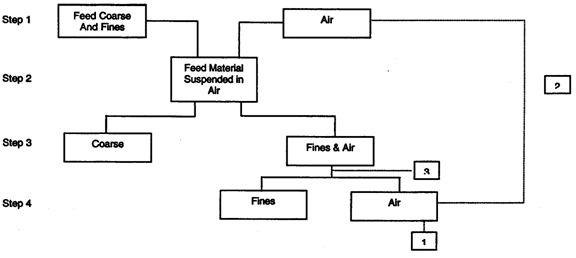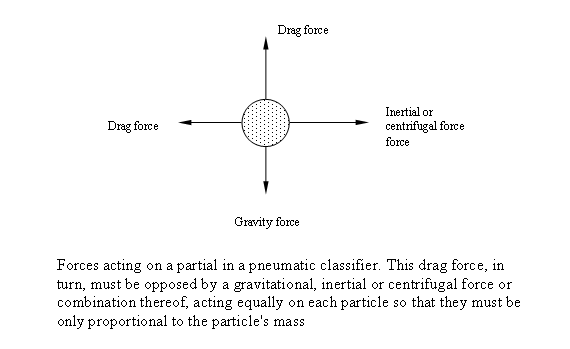
BIOMASS PROCESSING
![]()
| Pneumatic Classifier
Step I - Suspension of the feed material to be classified in an air stream. Step I is sometimes completely separated from the classification process as when the classifier is handling an air-solids stream from an air-swept mill. Step II - Introduction of the air-solids stream in the classification zone. Step III - Separation of the coarse fraction from the fine fraction and air stream by opposing the drag force created by the air with gravitational, inertial or centrifugal force or a combination of them. The drag force is proportional to the first power of a particle's diameter. Inertial or centrifugal force is proportional to the cube of the particle's diameter. If the particle is small enough, it will move with the air stream. If the forces are equal, the particle will be held in equilibrium. This equilibrium determines the cutpoint of an ideal classifier. The cutpoint therefore is equal to the particle size that has a 50-50 chance of ending in the fine fraction or coarse fraction. In some applications, it is necessary to remove part of the air stream with the coarse fraction to facilitate the removal of the coarse particles. Step IV - Separation and collection of the fine fraction from the air stream. The air is either released to atmosphere (1) to form an "open air system" or recirculated (2) to form a "closed air system." Step IV is sometimes eliminated with the fines and air mixture going to another process (3) such as another classifier or a direct-fired, pulverized coal burner, etc.
The pneumatic classifier use the movement of air to divide materials according to their terminal velocity which is dependent on differences in aerodynamic behavior in an airstream (Harmond et al., 1968)
|
| |
||||||
| |
||||||
| |
|||||||||
| |
|||||||||
| |
|||||||||
| |
||||
| |
||||
| |
||||
| |
|






